An Extremely Sparse Tomography Reconstruction of a Multispectral Temperature Field without Any a Priori Knowledge
Abstract
:1. Introduction
2. Basic Principles
2.1. Objective Function
2.2. Constraints
2.3. Reconstruction of the Field
- 1
- Data measurement: As shown in Figure 7a, a pyrometer is used to take any subregion at the edge of the field as the radiation reference area, and the reference radiation of the subregion is measured as shown in Figure 7b by combining the thermometry method in [16]. At the same time, multiple thermometry units are used to form a distributed network to collect the projection data from multiple angles of the field, which are then used as the constraints for the reconstruction of the field; the projection data are shown in Figure 7c.
- 2
- 3
- Modeling the function: According to the thermometry method in [16], the radiation information in , , ···, and is used to establish the radiation characteristics of the subregion, and the results are shown in Figure 7e. The DTW values between the subregions and the reference radiation are calculated and summed to establish the function model F for the reconstruction of the field.
- 4
- Function optimization: As shown in Figure 7f, the field reconstruction objective function is optimized by using the constraints of the equation obtained in step (1) above, and the function solution is judged to reach the optimal value according to the convergence condition of the algorithm; otherwise, it is returned to step (2) to optimize the radiation value of each band of the temperature field until the optimal solution is obtained. The optimization algorithm can be realized using gradient descent, particle swarm and neural network.
- 5
3. Simulation Verification
3.1. Simulation Setup
3.2. Simulation Results
3.3. Advantages of This Method
4. Discussion
4.1. The Influence of the Initial Value on the Reconstruction Results
4.2. The Influence of the Angle between Two Projections on the Reconstruction Results
4.3. The Influence of the Surface Fitting Function on the Reconstruction Results
5. Conclusions
Author Contributions
Funding
Institutional Review Board Statement
Informed Consent Statement
Data Availability Statement
Acknowledgments
Conflicts of Interest
References
- Berenguer-Vidal, R.; Verdú-Monedero, R.; Morales-Sánchez, J.; Sellés-Navarro, I.; Kovalyk, O.; Sancho-Gómez, J.-L. Decision Trees for Glaucoma Screening Based on the Asymmetry of the Retinal Nerve Fiber Layer in Optical Coherence Tomography. Sensors 2022, 22, 4842. [Google Scholar] [CrossRef] [PubMed]
- Elgafi, M.; Sharafeldeen, A.; Elnakib, A.; Elgarayhi, A.; Alghamdi, N.S.; Sallah, M.; El-Baz, A. Detection of Diabetic Retinopathy Using Extracted 3D Features from OCT Images. Sensors 2022, 22, 7833. [Google Scholar] [CrossRef] [PubMed]
- Ge, X.; Chen, S.; Chen, S.; Liu, L. High resolution optical coherence tomography. J. Lightwave Technol. 2021, 39, 3824–3835. [Google Scholar] [CrossRef]
- Foo, C.T.; Unterberger, A.; Menser, J.; Mohri, K. Tomographic imaging using multi-simultaneous measurements (TIMes) for flame emission reconstructions. Opt. Express 2021, 29, 244–2551. [Google Scholar] [CrossRef] [PubMed]
- Cai, W.; Kaminski, C.F. A tomographic technique for the simultaneous imaging of temperature, chemical species, and pressure in reactive flows using absorption spectroscopy with frequency-agile lasers. Appl. Phys. Lett. 2014, 104, 034101. [Google Scholar] [CrossRef]
- Jeon, M.G.; Deguchi, Y.; Kamimoto, T.; Doh, D.H.; Cho, G.R. Performances of new reconstruction algorithms for CT-TDLAS (computer tomography-tunable diode laser absorption spectroscopy). Appl. Therm. Eng. 2020, 115, 1148–1160. [Google Scholar] [CrossRef]
- Wright, P.; Terzija, N.; Davidson, J.L.; Garcia-Castillo, S.; Garcia-Stewart, C.; Pegrum, S.; Colbourne, S.; Turner, P.; Crossley, S.D.; Litt, T.; et al. High-speed chemical species tomography in a multi-cylinder automotive engine. Chem. Eng. J. 2010, 158, 2–10. [Google Scholar] [CrossRef]
- Liu, C.; Xu, L.; Cao, Z.; McCann, H. Reconstruction of axisymmetric temperature and gas concentration distributions by combining fan-beam TDLAS with onion-peeling deconvolution. IEEE Trans. Instrum. Meas. 2014, 63, 3067–3075. [Google Scholar] [CrossRef]
- Wang, X.; Wang, Z.; Cheng, H. Image based temperature field reconstruction for combustion flame. Optik 2015, 126, 1072–1080. [Google Scholar] [CrossRef]
- Lou, C.; Li, W.; Zhou, H.; Salinas, C.T. Experimental investigation on simultaneous measurement of temperature distributions and radiative properties in an oil-fired tunnel furnace by radiation analysis. Int. J. Heat Mass Transf. 2011, 54, 1–8. [Google Scholar] [CrossRef]
- Krauze, W.; Makowski, P.; Kujawinska, M.; Kus, A. Generalized total variation iterative constraint strategy in limited angle optical diffraction tomography. Opt. Express 2016, 24, 4924–4936. [Google Scholar] [CrossRef]
- Wan, X.; Wang, P.; Zhang, Z.; Zhang, H. Fused entropy algorithm in optical computed tomography. Entropy 2014, 16, 943–952. [Google Scholar] [CrossRef]
- Zhang, H.; Liu, B.; Yu, H.; Dong, B. MetaInv-net: Meta inversion network for sparse view CT image reconstruction. IEEE Trans. Med. Imaging 2021, 40, 621–634. [Google Scholar] [CrossRef] [PubMed]
- Gao, Y.; Yu, Q.; Jiang, W.; Wan, X. Reconstruction of three-dimensional arc-plasma temperature fields by orthographic and double-wave spectral tomography. Opt. Laser Technol. 2010, 42, 61–69. [Google Scholar] [CrossRef]
- Ludwig, C.B.; Malkmus, W.; Reardon, J.E.; Thomson, J.A.L. Handbook of Infrared Radiation from Combustion Gases; National Aeronautics And Space Administration: Washington, DC, USA, 1973. Available online: https://ntrs.nasa.gov/citations/19730019075 (accessed on 2 January 2024).
- Zhang, X.; Liu, B.; Wang, H.; Ma, W.; Han, Y. Multispectral Thermometry Method Based on Optimisation Ideas. Sensors 2024, 24, 2025. [Google Scholar] [CrossRef] [PubMed]
- Zhang, X.; Wang, J.; Zhang, J.; Yan, J.; Han, Y. A design method for direct vision coaxial linear dispersion spectrometers. Opt. Express 2022, 30, 38266. [Google Scholar] [CrossRef]
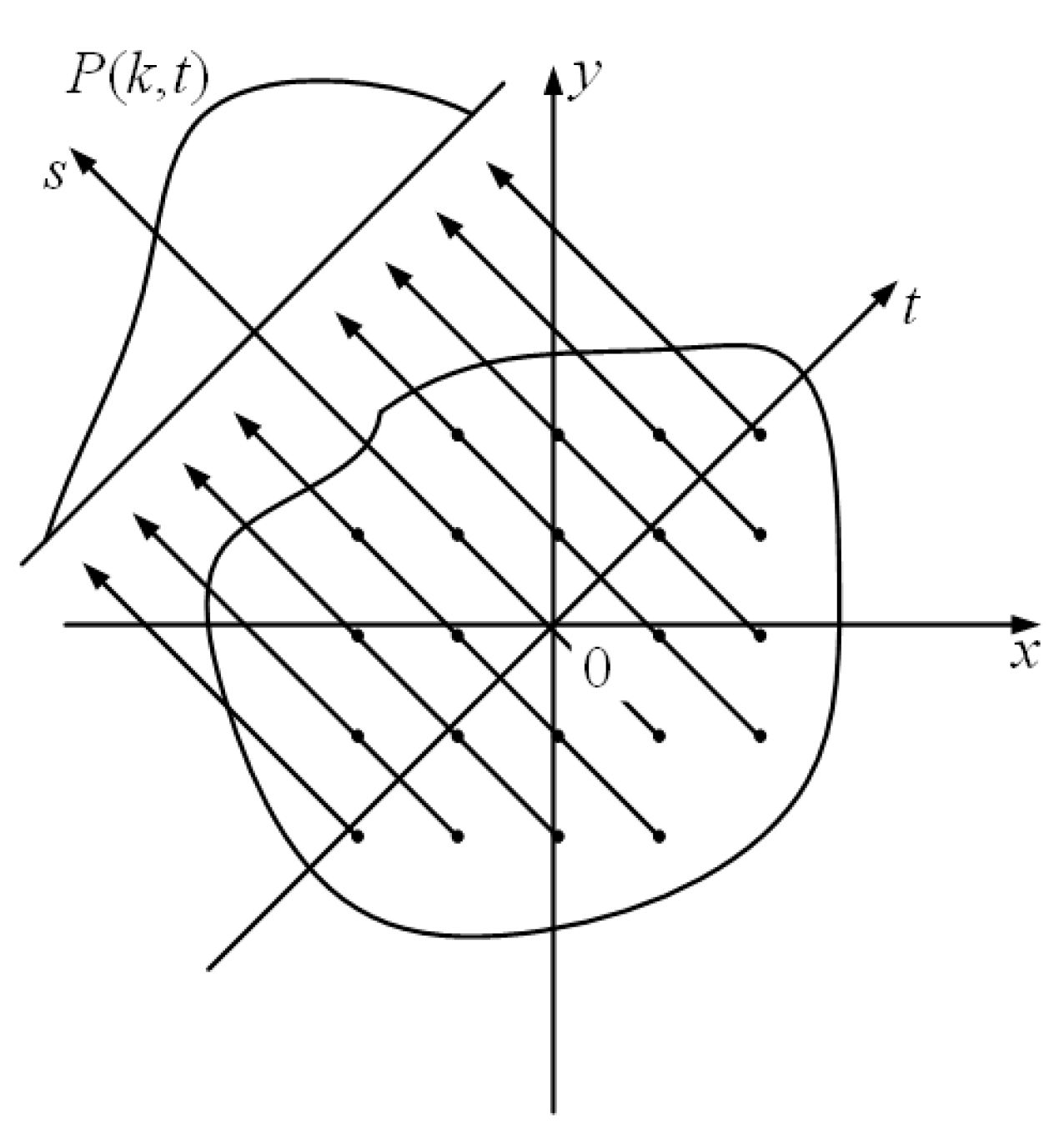
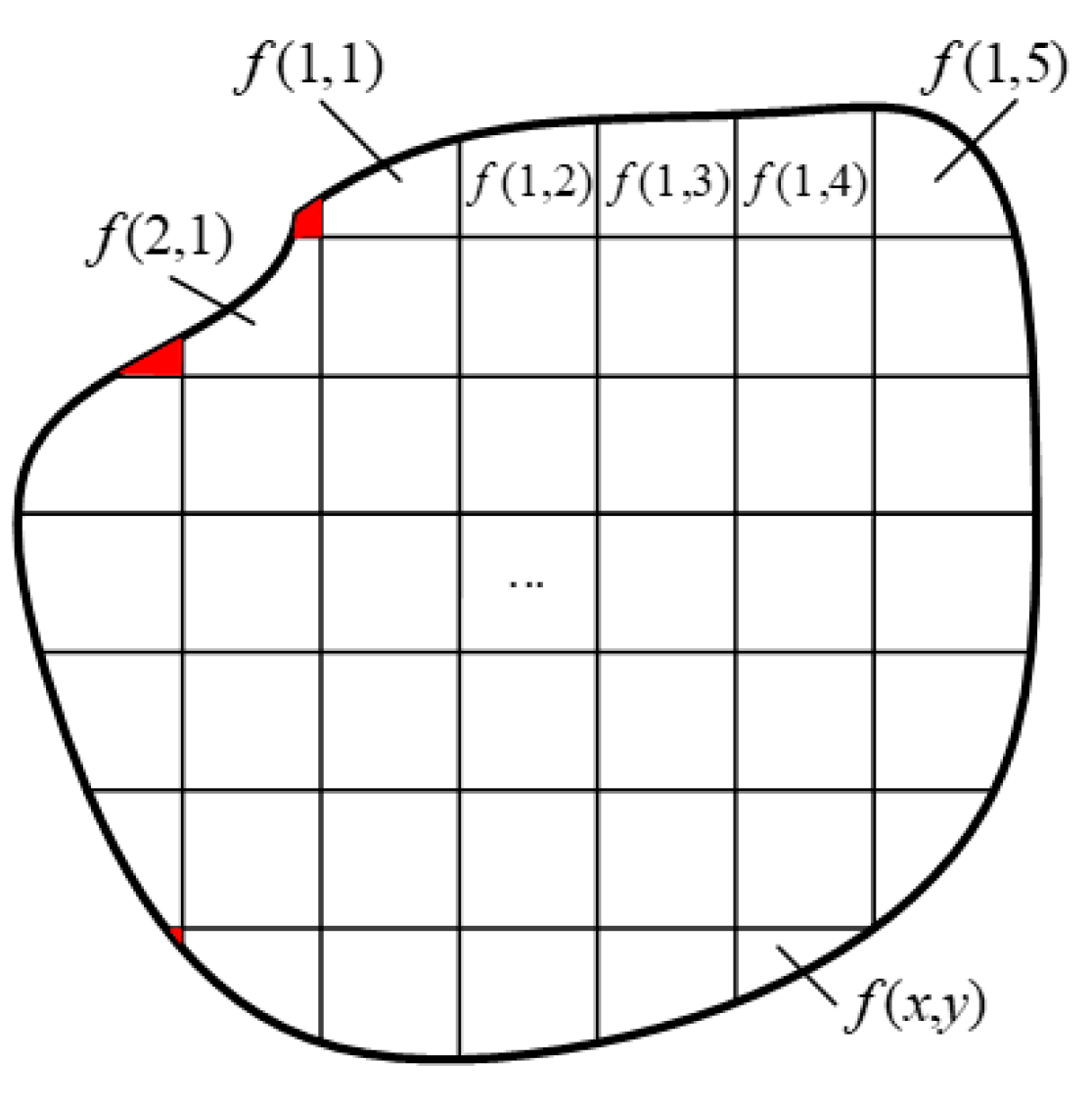
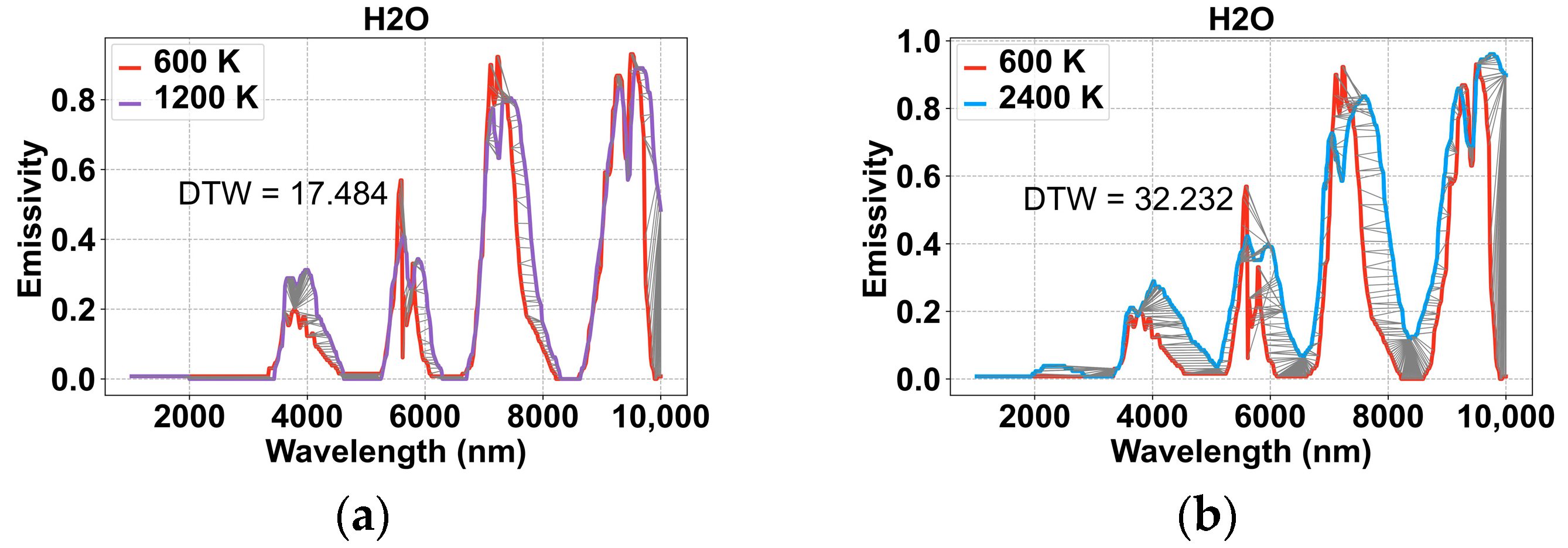
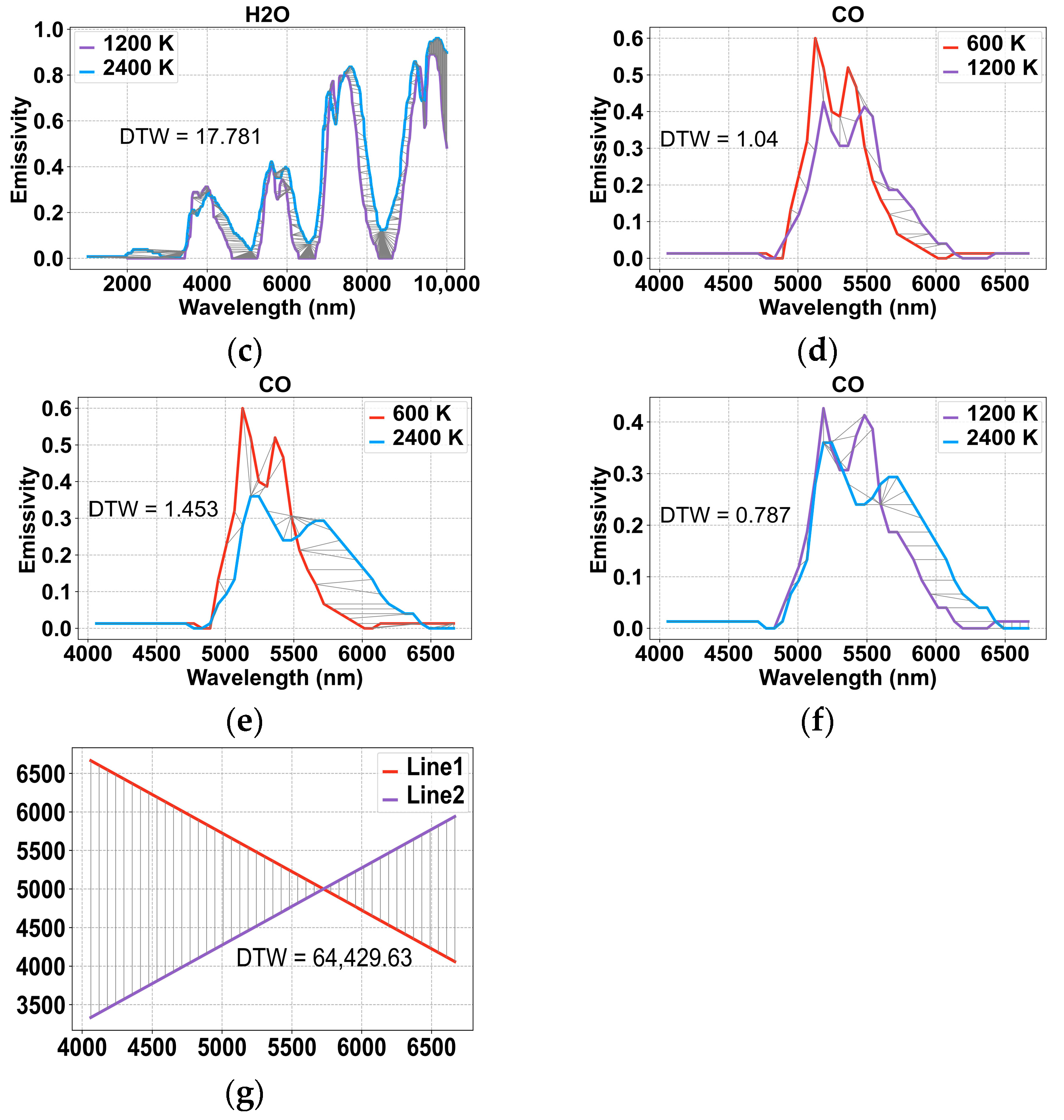
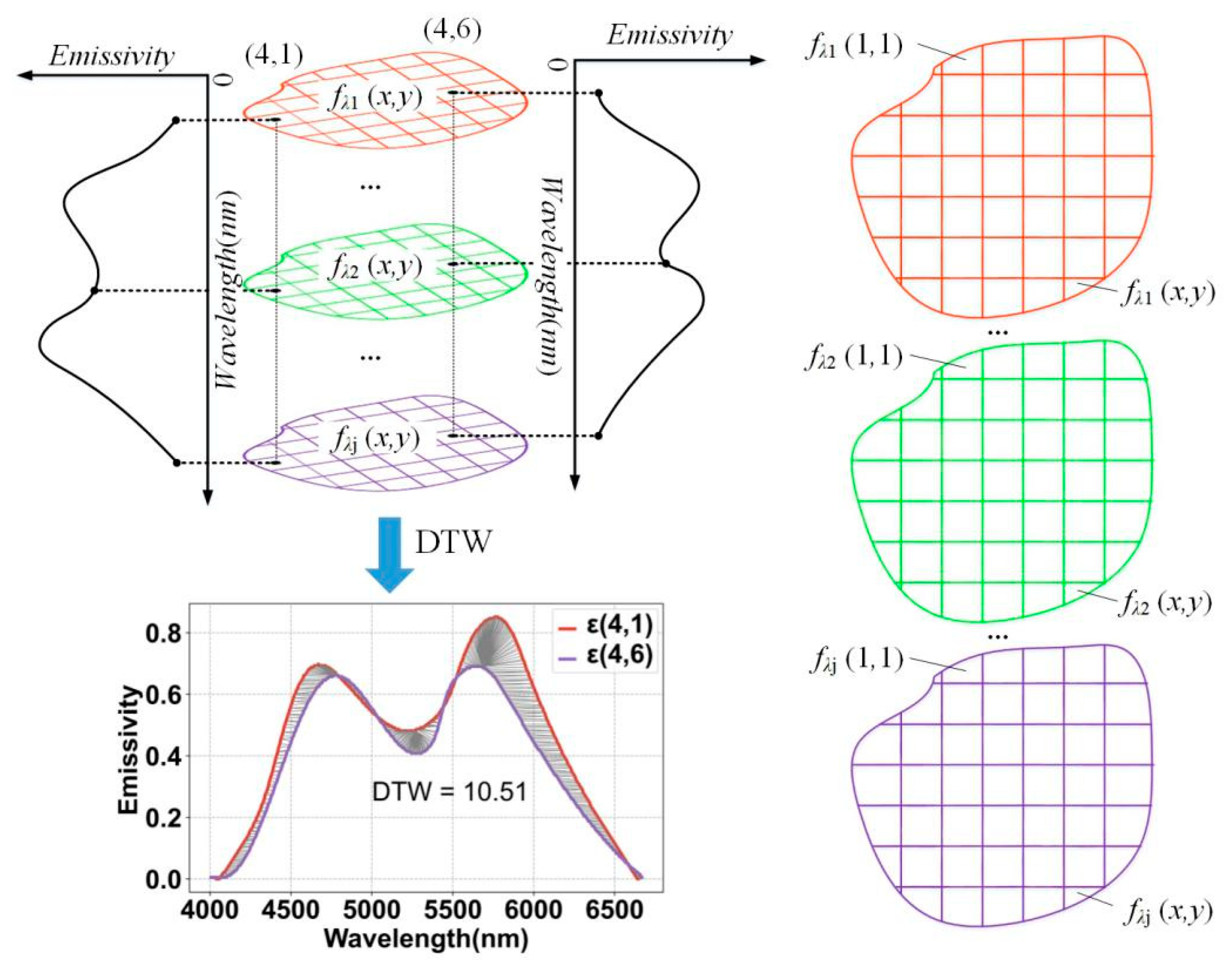

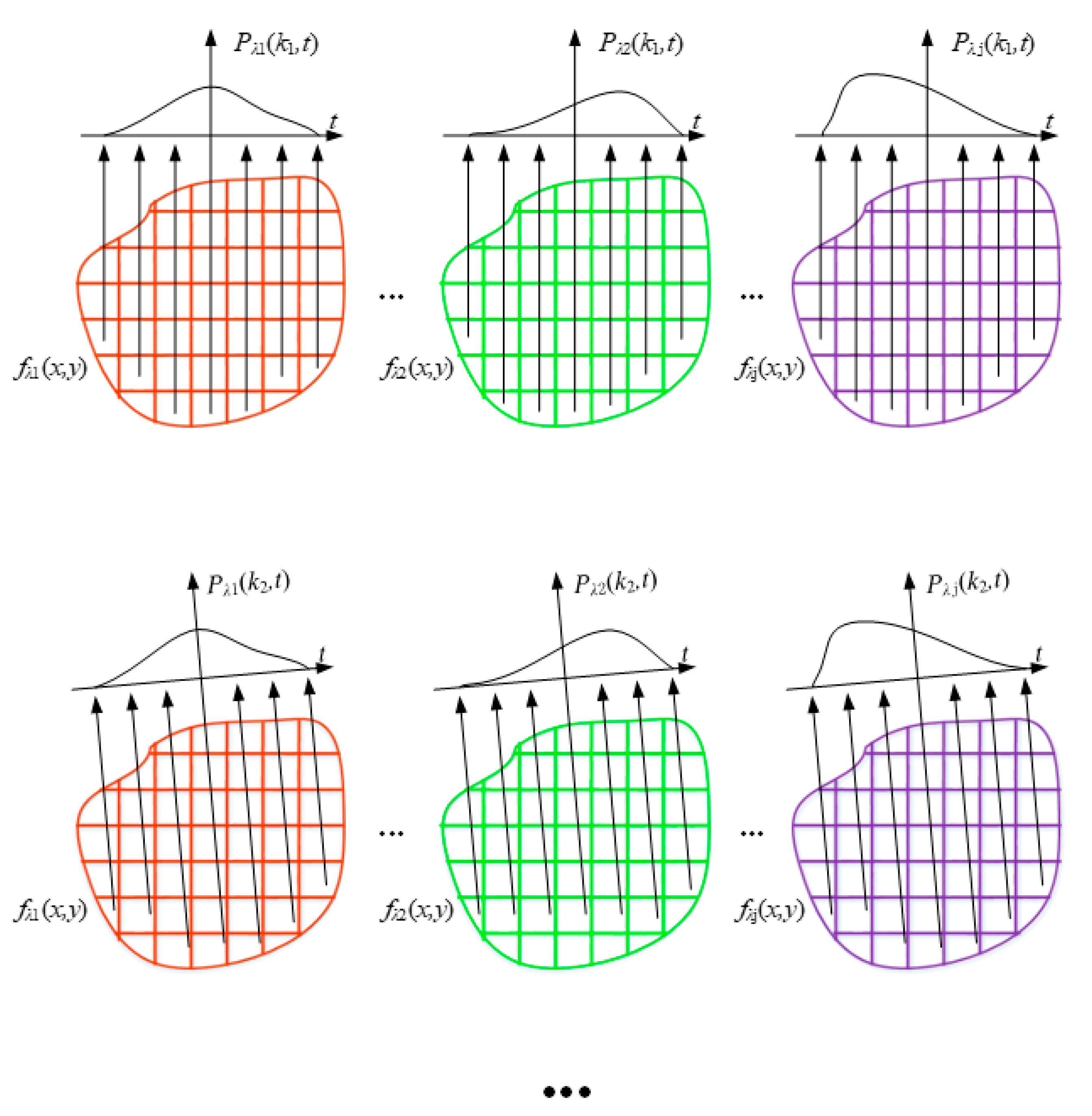

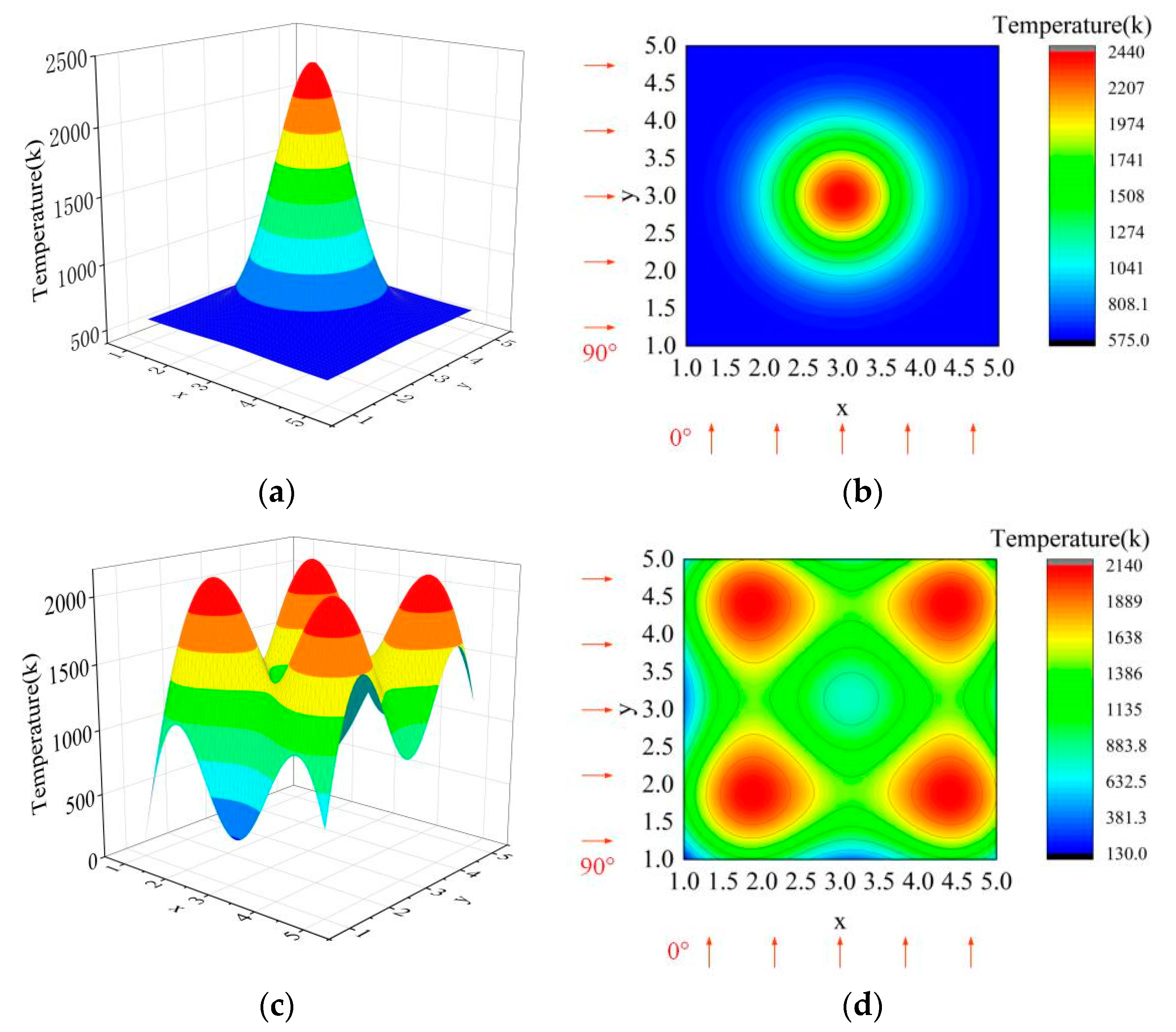
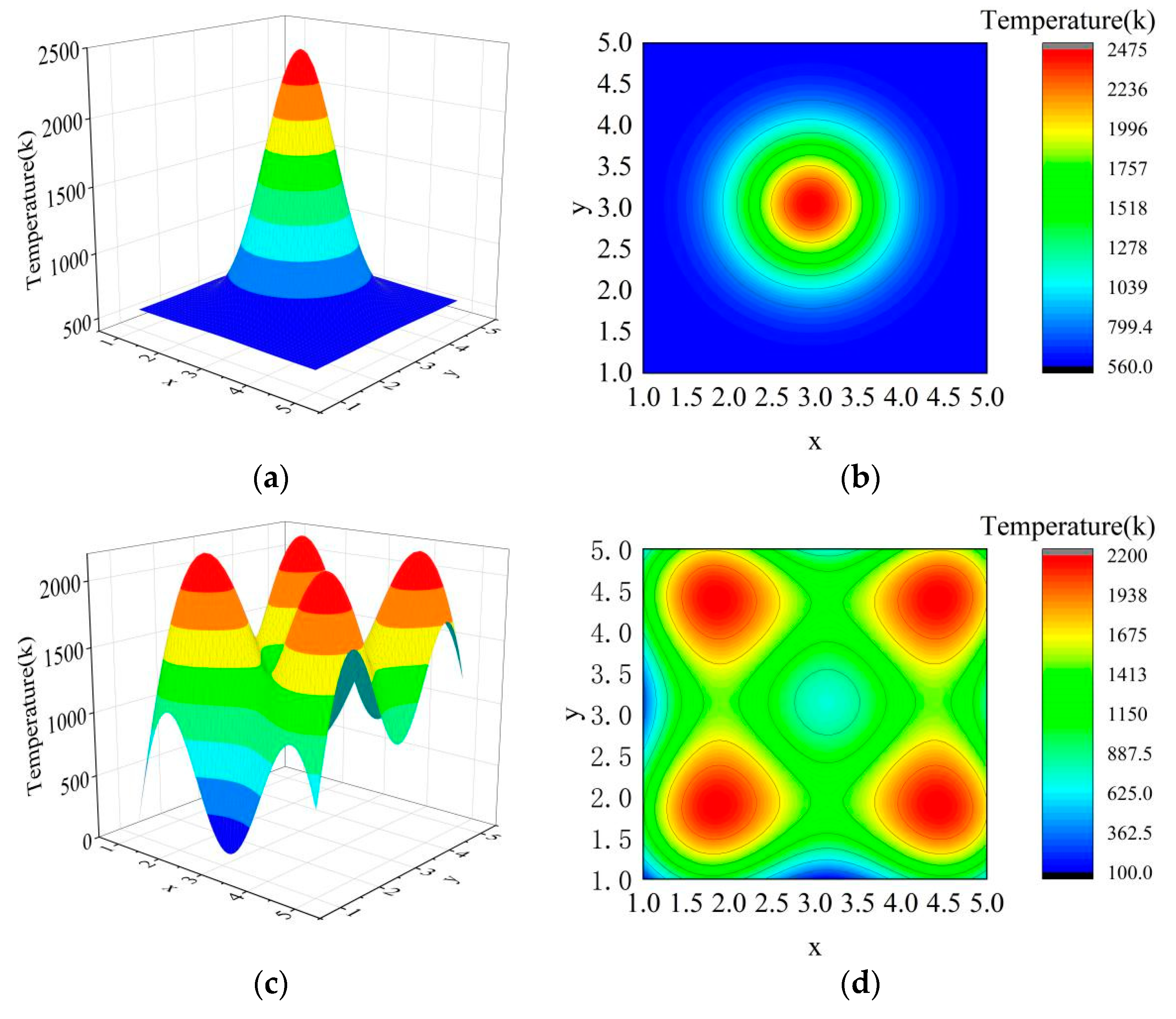
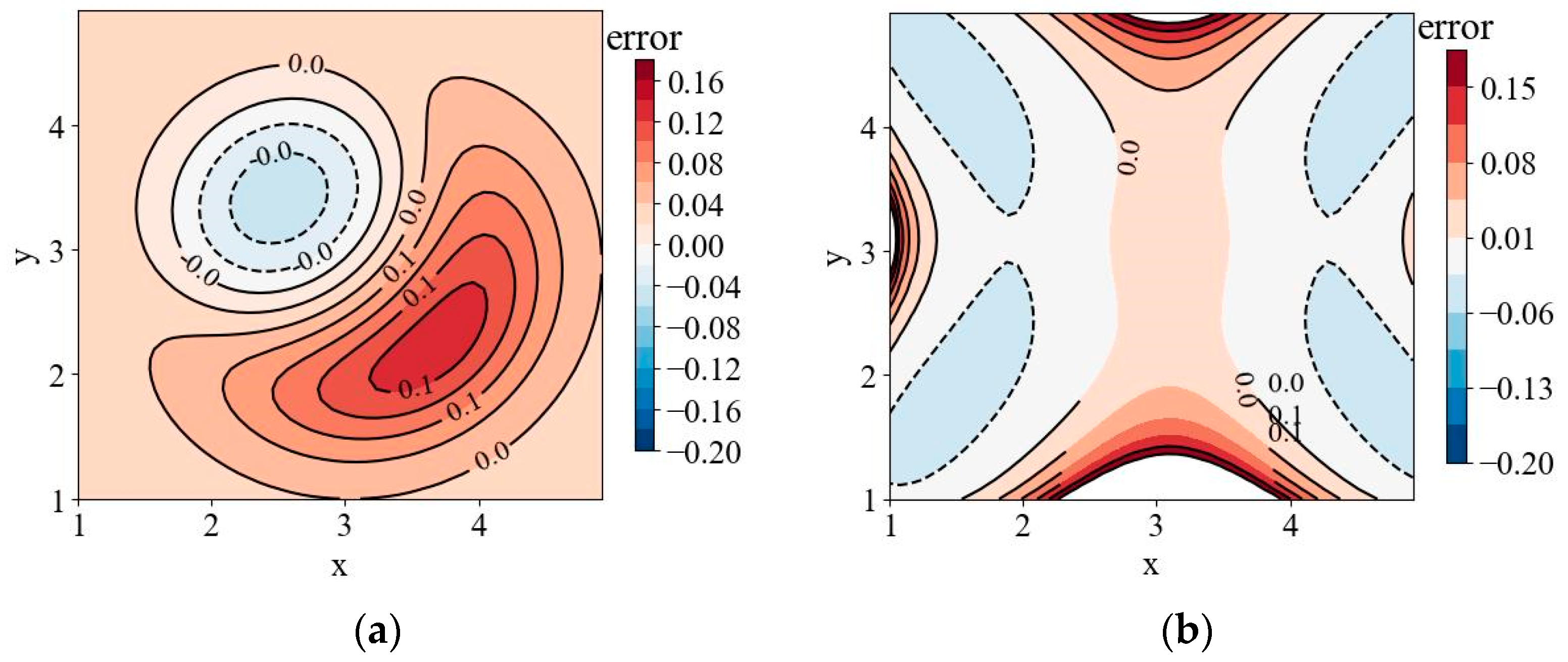

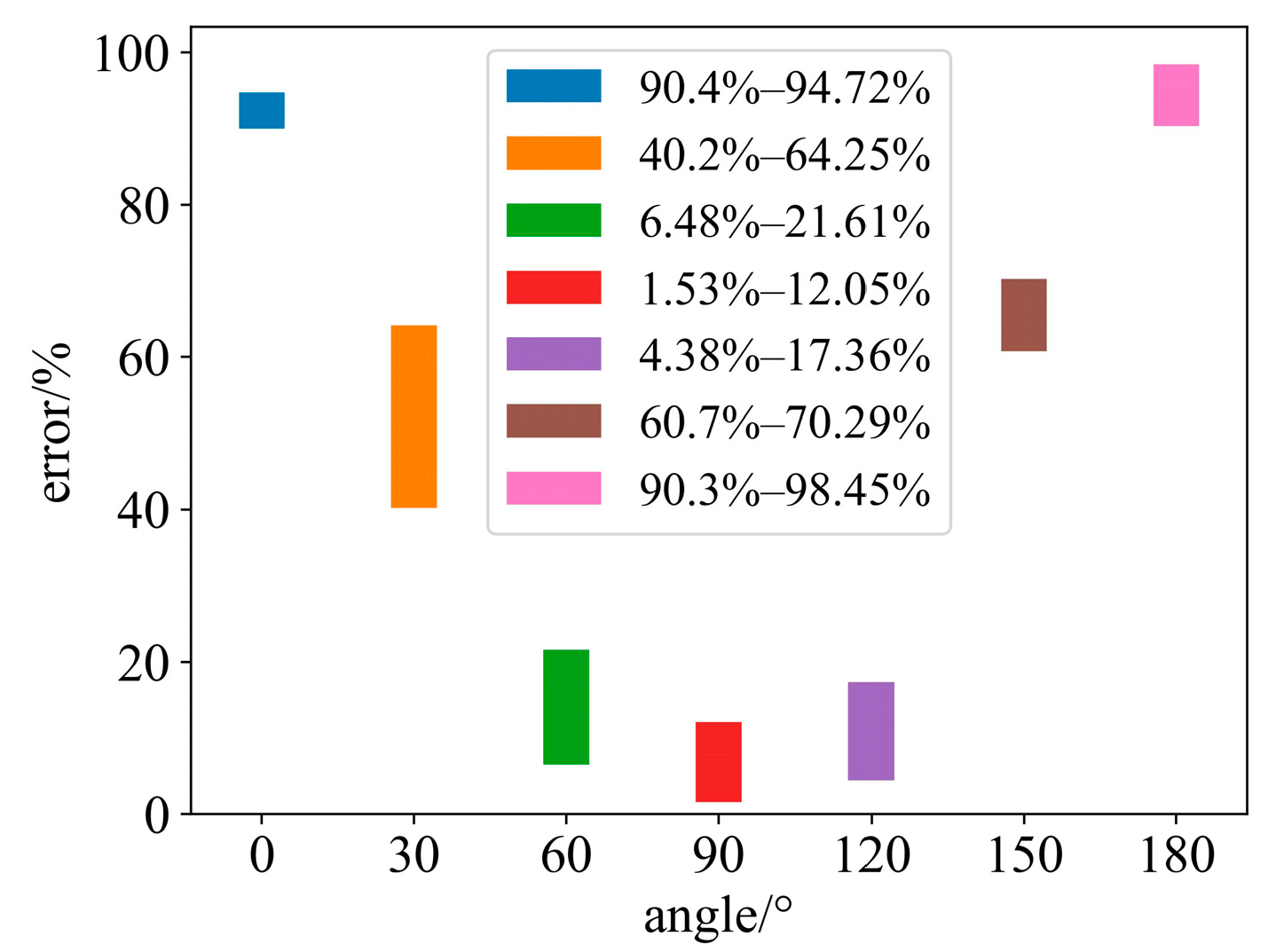
| Temperature (K) | Wavelength (nm) | ||||||||||
|---|---|---|---|---|---|---|---|---|---|---|---|
| 5066 | 5126 | 5185 | 5244 | 5304 | 5363 | 5422 | 5481 | 5541 | 5600 | 5659 | |
| 600 | 0.32 | 0.6 | 0.52 | 0.4 | 0.39 | 0.52 | 0.47 | 0.31 | 0.21 | 0.16 | 0.12 |
| 1200 | 0.19 | 0.29 | 0.43 | 0.35 | 0.31 | 0.31 | 0.37 | 0.41 | 0.39 | 0.24 | 0.19 |
| 2400 | 0.13 | 0.28 | 0.36 | 0.36 | 0.32 | 0.28 | 0.24 | 0.24 | 0.25 | 0.28 | 0.29 |
| Projection (10−11 W·m−2·μm−1·sr−1) | Wavelength (nm) | |||||||||||
|---|---|---|---|---|---|---|---|---|---|---|---|---|
| 5066 | 5126 | 5185 | 5244 | 5304 | 5363 | 5422 | 5481 | 5541 | 5600 | 5659 | ||
| Single-peak | P(0°,1) | 5.68 | 10.00 | 8.22 | 5.98 | 5.46 | 6.95 | 5.90 | 3.67 | 2.42 | 1.72 | 1.23 |
| P(0°,2) | 4.26 | 6.97 | 7.35 | 5.51 | 4.79 | 5.24 | 5.20 | 4.45 | 3.61 | 2.24 | 1.64 | |
| P(0°,3) | 4.08 | 6.93 | 7.14 | 5.55 | 4.83 | 5.17 | 4.86 | 4.03 | 3.31 | 2.33 | 1.86 | |
| P(0°,4) | 4.26 | 6.97 | 7.35 | 5.51 | 4.79 | 5.24 | 5.20 | 4.45 | 3.61 | 2.24 | 1.64 | |
| P(0°,5) | 5.68 | 10.00 | 8.22 | 5.98 | 5.46 | 6.95 | 5.90 | 3.67 | 2.42 | 1.72 | 1.23 | |
| P(90°,1) | 5.68 | 10.00 | 8.22 | 5.98 | 5.46 | 6.95 | 5.90 | 3.67 | 2.42 | 1.72 | 1.23 | |
| P(90°,2) | 4.26 | 6.97 | 7.35 | 5.51 | 4.79 | 5.24 | 5.20 | 4.45 | 3.61 | 2.24 | 1.64 | |
| P(90°,3) | 4.08 | 6.93 | 7.14 | 5.55 | 4.83 | 5.17 | 4.86 | 4.03 | 3.31 | 2.33 | 1.86 | |
| P(90°,4) | 4.26 | 6.97 | 7.35 | 5.51 | 4.79 | 5.24 | 5.20 | 4.45 | 3.61 | 2.24 | 1.64 | |
| P(90°,5) | 5.68 | 10.00 | 8.22 | 5.98 | 5.46 | 6.95 | 5.90 | 3.67 | 2.42 | 1.72 | 1.23 | |
| Multi-peak | P(0°,1) | 5.69 | 10.06 | 8.23 | 5.98 | 5.47 | 6.95 | 5.91 | 3.68 | 2.42 | 1.72 | 1.23 |
| P(0°,2) | 5.70 | 10.08 | 8.25 | 5.99 | 5.48 | 6.97 | 5.92 | 3.68 | 2.43 | 1.73 | 1.23 | |
| P(0°,3) | 5.69 | 10.06 | 8.23 | 5.98 | 5.47 | 6.95 | 5.91 | 3.68 | 2.42 | 1.72 | 1.23 | |
| P(0°,4) | 5.70 | 10.08 | 8.25 | 5.99 | 5.48 | 6.97 | 5.92 | 3.68 | 2.43 | 1.73 | 1.23 | |
| P(0°,5) | 5.69 | 10.06 | 8.23 | 5.98 | 5.47 | 6.95 | 5.91 | 3.68 | 2.42 | 1.72 | 1.23 | |
| P(90°,1) | 5.69 | 10.06 | 8.23 | 5.98 | 5.47 | 6.95 | 5.91 | 3.68 | 2.42 | 1.72 | 1.23 | |
| P(90°,2) | 5.70 | 10.08 | 8.25 | 5.99 | 5.48 | 6.97 | 5.92 | 3.68 | 2.43 | 1.73 | 1.23 | |
| P(90°,3) | 5.69 | 10.06 | 8.23 | 5.98 | 5.47 | 6.95 | 5.91 | 3.68 | 2.42 | 1.72 | 1.23 | |
| P(90°,4) | 5.70 | 10.08 | 8.25 | 5.99 | 5.48 | 6.97 | 5.92 | 3.68 | 2.43 | 1.73 | 1.23 | |
| P(90°,5) | 5.69 | 10.06 | 8.23 | 5.98 | 5.47 | 6.95 | 5.91 | 3.68 | 2.42 | 1.72 | 1.23 | |
| Temperature Field | Aver (%) | Max (%) | Rmse (%) |
|---|---|---|---|
| Single-peak | 1.53 | 6.26 | 5.08 |
| Multi-peak | 2.1 | 12.05 | 3.99 |
| Method | Prior knowledge | Error Distribution (%) | Projection Numbers | Modeling Time (s) | Reconstruction Time (s) |
|---|---|---|---|---|---|
| Textual method | × | 1.53–12.05 | 2 | 0.04 | 0.31 |
| Method in [12] | √ | 0.5–11.87 | 6 | None | None |
| Method in [13] | √ | None | 15–180 | None | 0.4647–0.8479 |
| Method in [14] | √ | 0.21–21.57 | 2–6 | None | None |
| The Ratio to the Best Initial Value | 20% | 40% | 90% | 110% | 160% | 180% | 200% |
|---|---|---|---|---|---|---|---|
| Max error (%) | 32.17 | 9.58 | 4.36 | 3.29 | 11.68 | 19.67 | 62.43 |
| Function Name | Poly2D (Textual Function) | Cosine | Fourier2D | Gaussian2D |
|---|---|---|---|---|
| Error (%) | 1.53–12.05 | 1.67–13.62 | 7.49–18.53 | 0.95–11.94 |
| BCR | - | 0.94 | 0.59 | 1.05 |
Disclaimer/Publisher’s Note: The statements, opinions and data contained in all publications are solely those of the individual author(s) and contributor(s) and not of MDPI and/or the editor(s). MDPI and/or the editor(s) disclaim responsibility for any injury to people or property resulting from any ideas, methods, instructions or products referred to in the content. |
© 2024 by the authors. Licensee MDPI, Basel, Switzerland. This article is an open access article distributed under the terms and conditions of the Creative Commons Attribution (CC BY) license (https://creativecommons.org/licenses/by/4.0/).
Share and Cite
Zhang, X.; Han, Y. An Extremely Sparse Tomography Reconstruction of a Multispectral Temperature Field without Any a Priori Knowledge. Sensors 2024, 24, 5264. https://doi.org/10.3390/s24165264
Zhang X, Han Y. An Extremely Sparse Tomography Reconstruction of a Multispectral Temperature Field without Any a Priori Knowledge. Sensors. 2024; 24(16):5264. https://doi.org/10.3390/s24165264
Chicago/Turabian StyleZhang, Xuan, and Yan Han. 2024. "An Extremely Sparse Tomography Reconstruction of a Multispectral Temperature Field without Any a Priori Knowledge" Sensors 24, no. 16: 5264. https://doi.org/10.3390/s24165264





